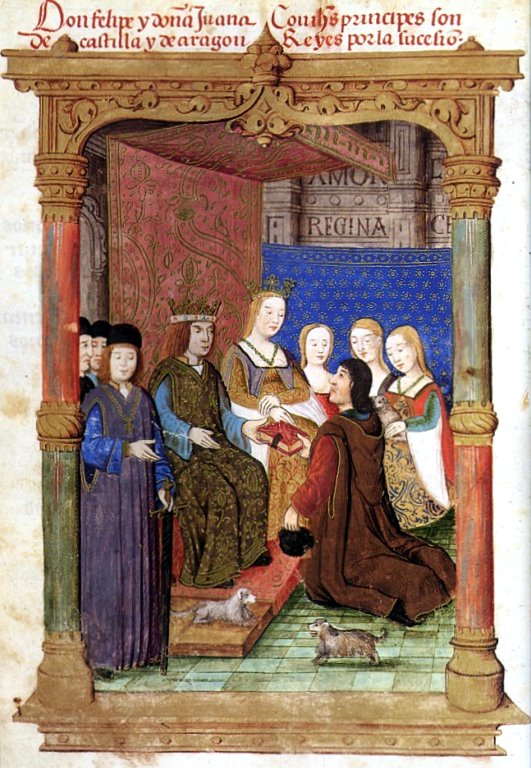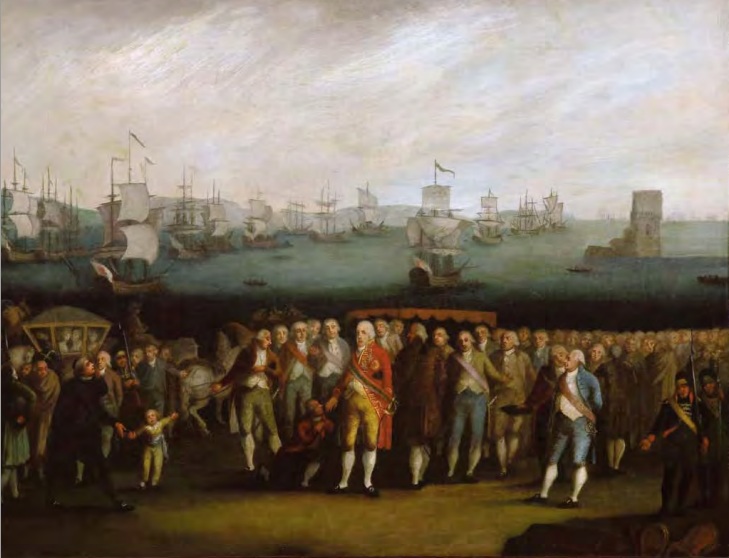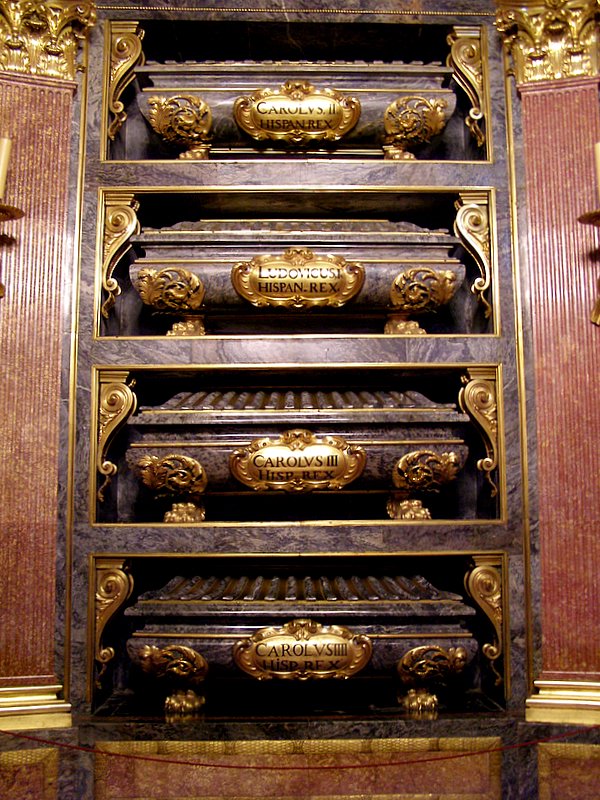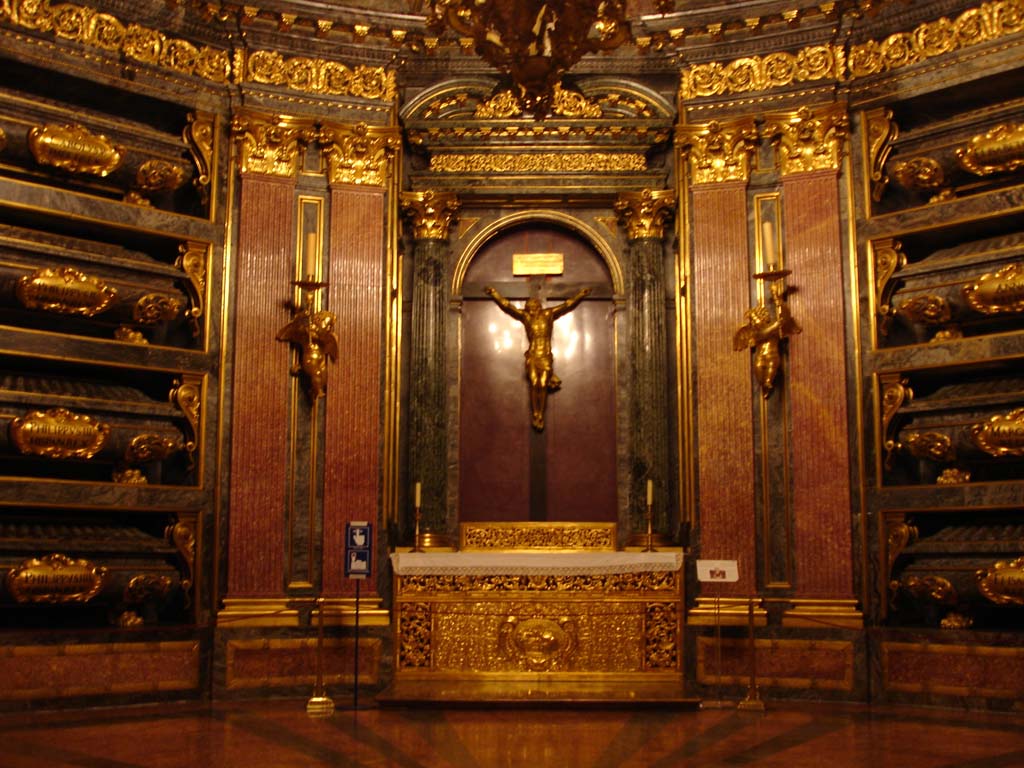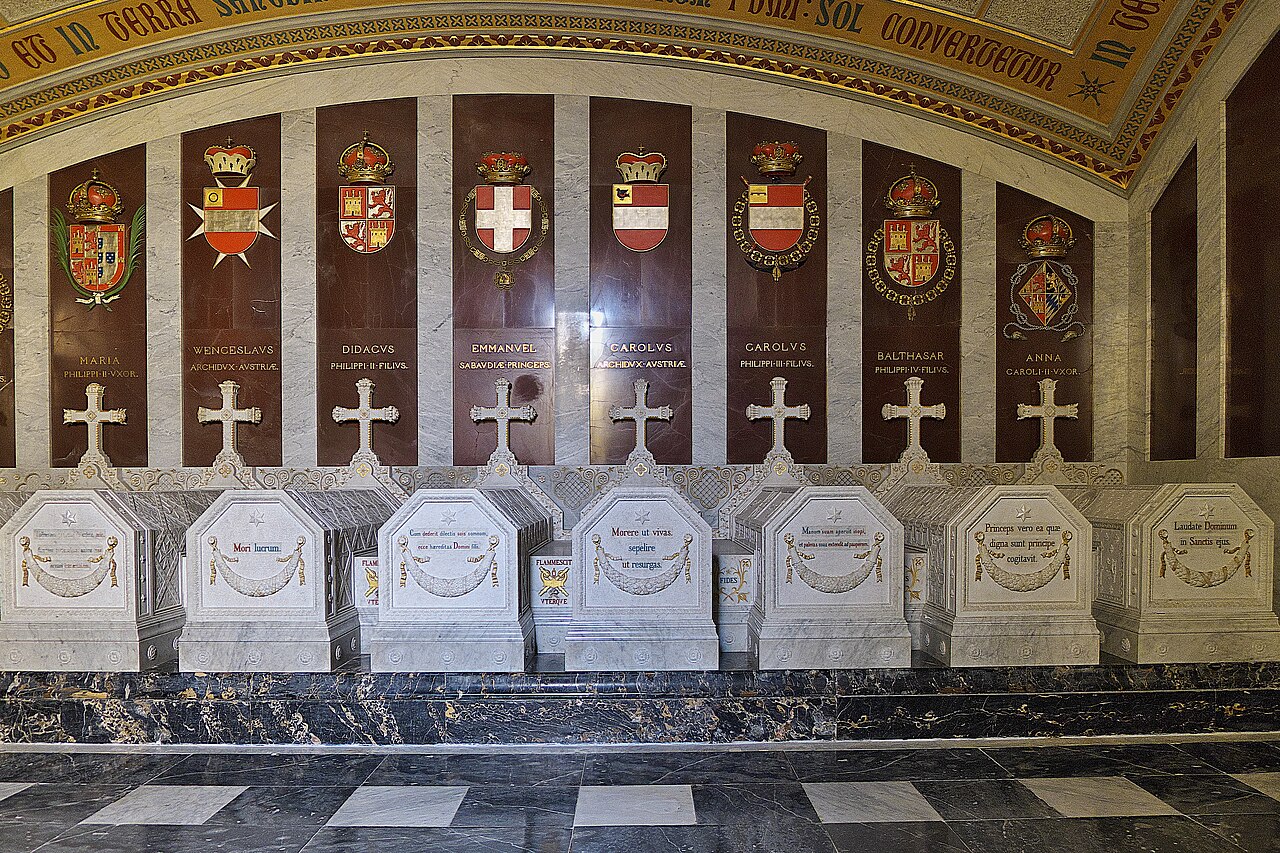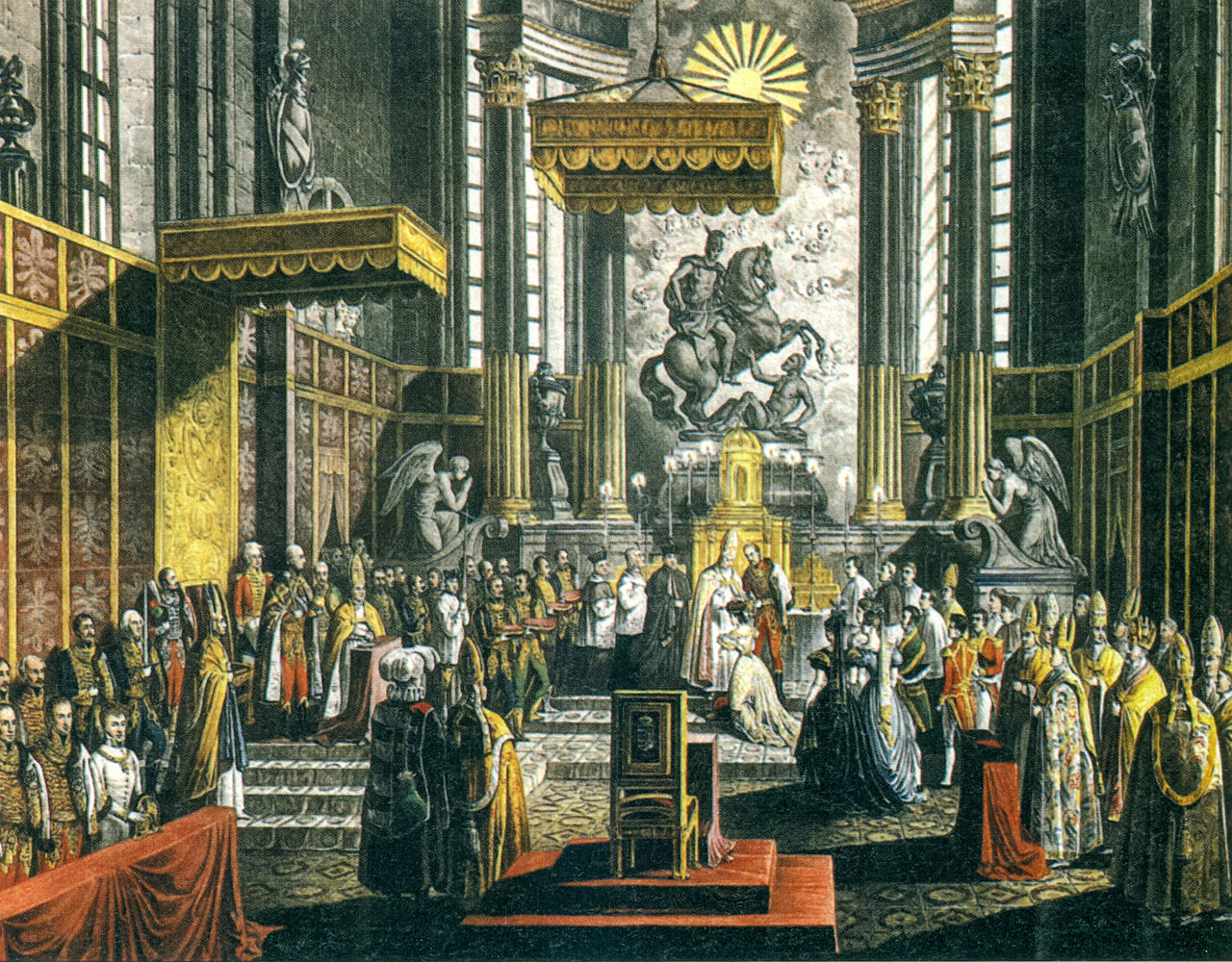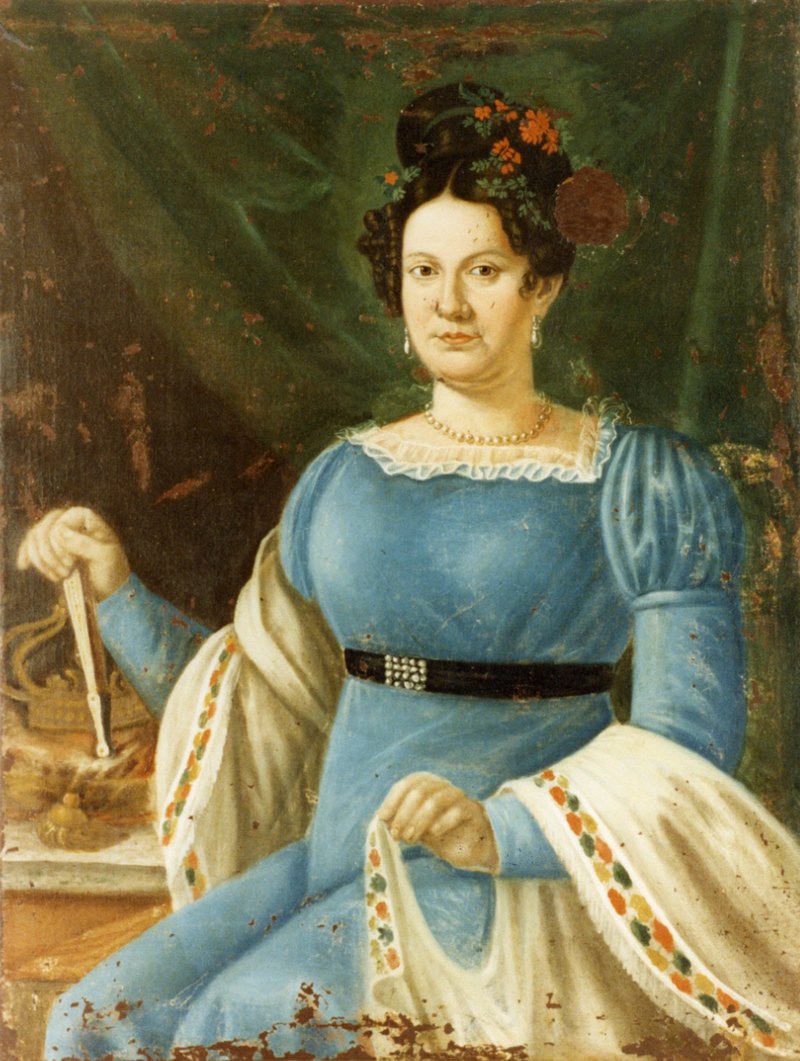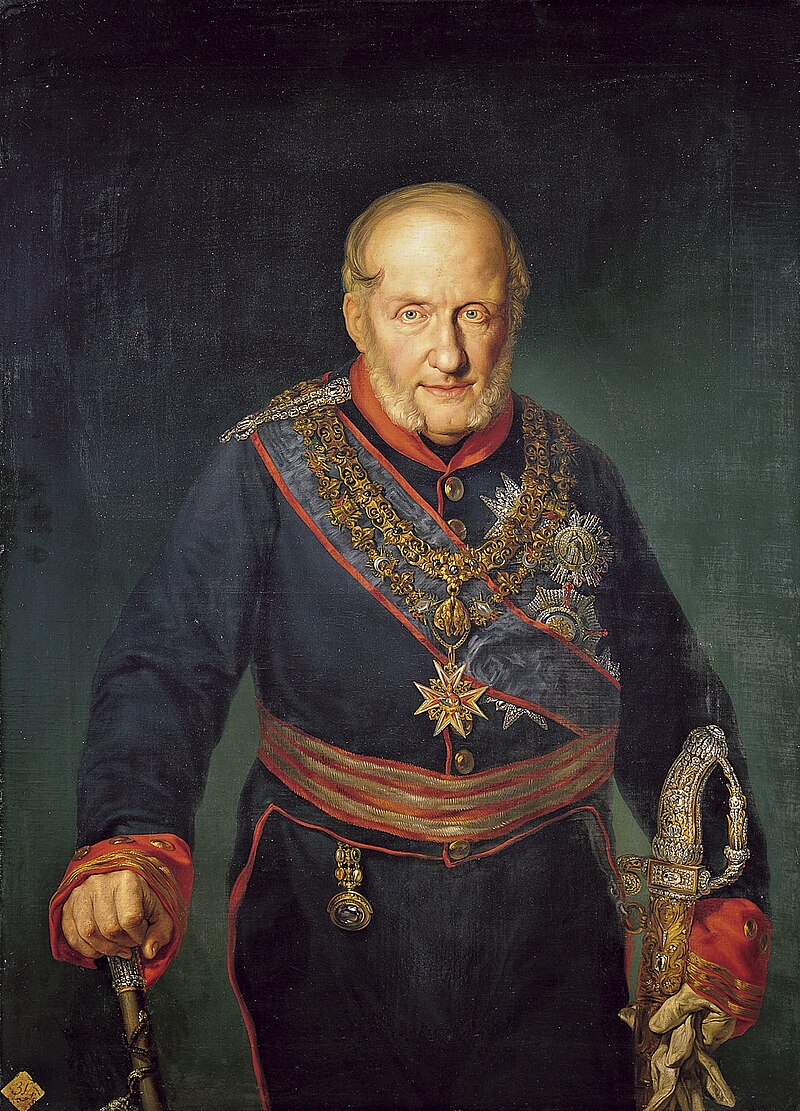by Susan Flantzer
© Unofficial Royalty 2022

Ferdinand II, King of Aragon; Credit – Wikipedia
Note: Ferdinand (Fernando in Spanish) and Isabella (Isabel in Spanish) will be used in this article because that is how they are generally known, especially in the United States.
On March 10, 1452, Ferdinand II, King of Aragon was born at the Palacio de los Sada in Sos del Rey Católico, Kingdom of Aragon, now in Spain. He was the only son and the elder of the two children of the future Juan II, King of Aragon and his second wife Juana Enriquez, 5th Lady of Casarrubios del Monte. Ferdinand’s paternal grandparents were Fernando I, King of Aragon and Leonor Urraca, 3rd Countess of Alburquerque. His maternal grandparents were Fadrique Enríquez de Mendoza, Admiral of Castile and Mariana Fernández de Córdoba y Ayala, 4th Lady of Casarrubios del Monte.
Ferdinand had one younger sister:
Ferdinand had four half-siblings from his father’s first marriage to Blanche of Navarre:
- Carlos, Prince of Viana (1421 – 1461), married Agnes of Cleves, no children
- Juana of Aragon (1423 – 1425), died in childhood
- Blanche II, (titular) Queen of Navarre (1424 – 1464), married King Enrique IV of Castile and León, no children, marriage was annulled
- Leonor, Queen of Navarre (1426 – 1479), married Gaston IV, Count of Foix, had eleven children, Leonor and Gaston’s granddaughter Germaine of Foix was the second wife of Ferdinand King II of Aragon
Ferdinand’s paternal uncle Alfonso V, King of Aragon had no children, so upon his death in 1458, Ferdinand’s father became Juan II, King of Aragon. Ferdinand’s much older half-brother Carlos was, by primogeniture, heir to the throne of Aragon. However, Carlos and his father Juan II were always in conflict, and Juan II did not Carlos to succeed him. In 1461, 40-year-old Carlos suddenly died and nine-year-old Ferdinand was now his father’s undisputed heir. However, there were suspicions that Juana Enriquez, Carlos’ stepmother and Ferdinand’s mother had poisoned Carlos.
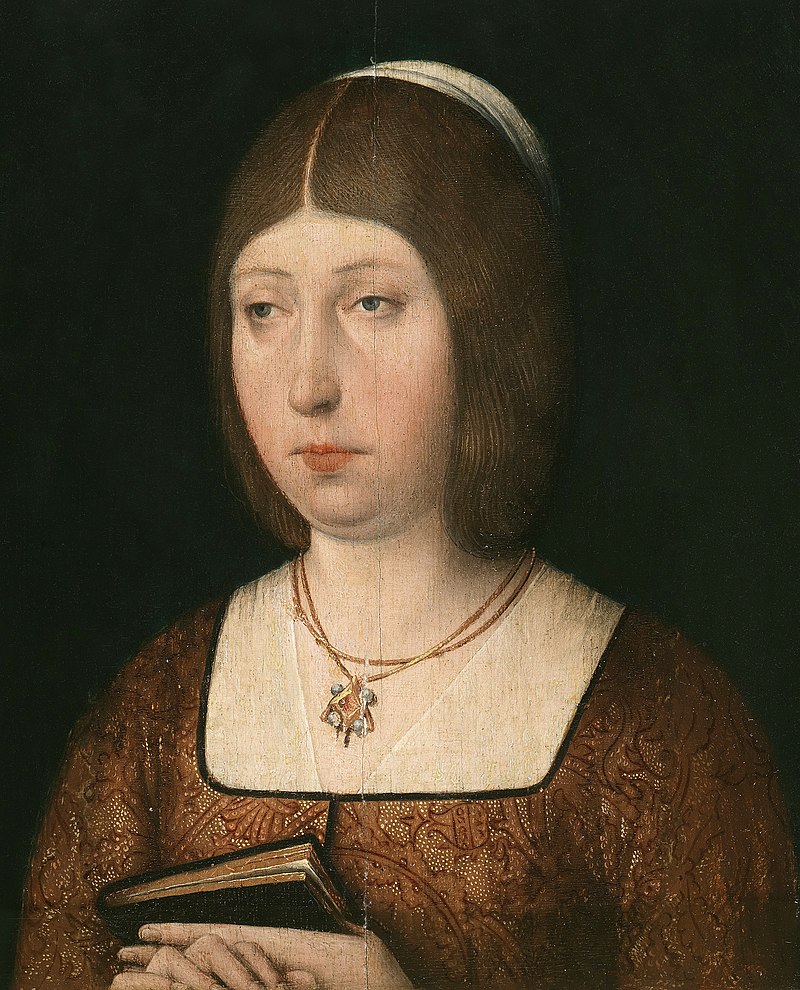
Isabella of Castile and León; Credit – Wikipedia
In the neighboring Kingdom of Castile and León, now part of Spain, Ferdinand’s first cousin Enrique IV was King of Castile and León. Because there were doubts about the paternity of Joanna la Beltraneja, the daughter of Enrique IV’s second wife (his first marriage had been childless), it seemed likely that Enrique IV’s much younger half-sister Isabella of Castile and León would succeed him. Ferdinand’s father Juan II, King of Aragon thought a marriage to Isabella, who was Ferdinand’s second cousin, would be a good idea.
Isabella’s half-brother Enrique IV, King of Castile and León, made several unsuccessful attempts to marry Isabella to grooms of his choice. His half-sister was resistant and a few of the intended grooms died. When Isabella reached the age of eighteen, she decided she wanted to choose her own husband. She chose Ferdinand of Aragon. Without her half-brother’s knowledge, Isabella contacted Ferdinand through Abraham Seneor, who would become her longtime advisor, and marriage arrangements were made.

A tapestry showing the wedding of Ferdinand and Isabella; Credit – Wikipedia
Fearing that Enrique IV would disrupt the marriage plans, Isabella made the excuse of wanting to visit the burial place of her brother in Ávila. She then traveled to Valladolid. Ferdinand disguised himself as a muleteer for some merchants and secretly traveled with a few companions to Valladolid. On October 19, 1469, Isabella and Ferdinand were married at the Palacio de los Vivero in Valladolid.

Ferdinand and Isabella with their eventual successor, their daughter Juana; Credit – Wikipedia
Through the marriages of their five children, Isabella and Ferdinand’s grandchildren were the monarchs or consorts of Bohemia and Hungary; Denmark, Sweden, and Norway; England; France, the Holy Roman Empire; Portugal; and Spain.
Ferdinand and Isabella had five children:
- Isabella of Aragon, Princess of Asturias from 1497–1498 (1470 – 1498), married (1) Prince Afonso of Portugal, no children (2) Prince Manuel, the future King Manuel I of Portugal, had one son Miguel da Paz, Crown Prince of both Portugal and Spain who died before his second birthday; Isabella died giving birth to Miguel
- Juan of Aragon, Prince of Asturias (1478 – 1497), married Margaret of Austria, no children
- Juana I, Queen of Castile, Queen of Aragon (1479 – 1555), married Philip of Austria (the Handsome), Duke of Burgundy, son of the Holy Roman Emperor Maximilian I and Mary, Duchess of Burgundy; had six children, all of whom were kings or queens consorts: Eleanor of Austria, Queen of Portugal and Queen of France; Holy Roman Emperor Charles V/King Carlos I of Spain; Isabella of Austria, Queen of Denmark, Norway, and Sweden; Mary, Queen of Hungary and Bohemia; Catherine of Austria, Queen of Portugal
- Maria of Aragon (1482 – 1517), married King Manuel I of Portugal, the widower of her elder sister Isabella; had ten children including King João III of Portugal and Cardinal-King Henrique I of Portugal
- Catalina (Catherine) of Aragon (1485 – 1536), married (1) Arthur, Prince of Wales, no children (2) Arthur’s younger brother King Henry VIII of England, had one surviving child Queen Mary I of England

Ferdinand and Isabella with their subjects; Credit – Wikipedia
When Enrique IV, King of Castile and León died in 1474, his half-sister succeeded him as Isabella I, Queen of Castile and León. According to the prenuptial agreement signed at the time of Isabella’s marriage to the future Ferdinand II, King of Aragon, the couple would share their power. Ferdinand became jure uxoris (by the right of his wife) King of Castile and León when Isabella succeeded her brother. When Ferdinand succeeded his father as King of Aragon in 1479, the Crown of Castile and the various territories of the Crown of Aragon were united in a personal union.
Ferdinand and Isabella carefully considered the marriages of their children. Their only son and heir Juan, Prince of Asturias married a Habsburg princess, Margaret of Austria, establishing the connection to the Habsburgs. Their eldest child Isabella married King Manuel I of Portugal and another daughter Juana married a Habsburg prince, Philip of Austria (the Handsome), brother of Margaret of Austria. However, Isabella and Ferdinand’s plans for their two eldest children did not work out. Their only son Juan, Prince of Asturias, died shortly after his marriage. Their daughter Isabella died during the birth of her only child Miguel da Paz, who died shortly before his second birthday. Isabella and Ferdinand’s crowns ultimately passed to their third child Juana and their son-in-law Philip of Austria from the House of Habsburg. Juana and Philip’s son Carlos (also known as Charles) became the first King of a united Spain, and also Holy Roman Emperor, Archduke of Austria, and Lord of the Netherlands, and held many other titles.

Ferdinand and Isabella’s daughter Catherine, who married both sons of King Henry VII of England; Credit – Wikipedia
Ferdinand and Isabella made successful dynastic matches for their two youngest daughters. The death of their eldest child Isabella necessitated her husband King Manuel I of Portugal to remarry, and Ferdinand and Isabella’s third daughter Maria became the second of his three wives. Maria gave birth to ten children including two Kings of Portugal. Ferdinand and Isabella’s youngest child Catherine (Catalina in Spanish) of Aragon, married Arthur, Prince of Wales, the eldest son and heir of King Henry VII of England. Arthur’s early death resulted in Catherine becoming the first of the six wives of his younger brother King Henry VIII of England. Although King Henry VIII was dissatisfied that his marriage to Catherine had produced no surviving sons, their only surviving child Mary was a reigning Queen of England.

The return of Christopher Columbus; his audience before King Ferdinand and Queen Isabella; Credit – Wikipedia
Isabella and Ferdinand’s support of Christopher Columbus in his search for the West Indies would result in the conquest of the discovered lands and the creation of the Spanish Empire. In 1478, Isabella and Ferdinand established the Spanish Inquisition to maintain the Roman Catholic religion in their kingdoms. The Spanish Inquisition was originally intended to identify heretics among those who had converted from Judaism and Islam to Catholicism. In 1492, Isabella and Ferdinand conquered the Islamic Nasrid Kingdom of Granada, in today’s southern Spain, and issued the Alhambra Decree which ordered the mass expulsion of Jews from Spain. Because of their defense of the Roman Catholic Church in Castile and León and Aragon, Isabella and Ferdinand were given the Latin title Rex Catholicissimus (Most Catholic King or Most Catholic Majesty) by Pope Alexander VI in 1494. Thereafter, they used the Spanish title Los Reyes Católicos, generally translated as “The Catholics Monarchs”. It is still a title maintained by the Spanish monarchy but neither King Juan Carlos I (reigned 1975 – 2014, abdicated in favor of his son), nor his son Felipe VI, the current King of Spain, have made use of the title, but they have not renounced it either.
In the fall of 1504, Isabella became quite ill and officially withdrew from government affairs. On November 26, 1504, Isabella died at the age of 53. In her will, Isabella requested a simple burial at the Monastery of San Francisco in the Alhambra royal complex in Granada. She also further stated that she “wanted and commanded” that if Ferdinand “chooses to buried in any church or monastery of any other part or place of my kingdoms, that my body be moved there and buried together.” Isabella’s remains were later transferred to the Royal Chapel of Granada which was built after her death.
After the death of Isabella, her daughter Juana became Queen of Castile and León but Ferdinand II, King of Aragon proclaimed himself Governor and Administrator of Castile and León. In 1506, Juana’s husband Philip of Habsburg became King of Castile and León jure uxoris (by the right of his wife) as Philip I, initiating the rule of the Habsburgs in the Spanish kingdoms which would last until 1700. However, Philip’s rule lasted only from July 12, 1506 to September 25, 1506, when he died suddenly, apparently of typhoid fever. Despite being the ruling Queen of Castile, Juana had no real role during her reign. After Philip’s death, Ferdinand convinced the parliament that Juana was too mentally ill to govern, and was appointed her guardian and regent of Castile and León. Juana was confined in the Royal Convent of Santa Clara in Tordesillas under the orders of her father.
After his death, Ferdinand was concerned that his Kingdom of Aragon would pass into the hands of the House of Habsburg. This could be prevented by the birth of a male heir to Ferdinand, who would displace his half-sister Juana in the order of succession to the throne of Aragon. As part of an alignment with the Kingdom of France, Ferdinand agreed to marry Germaine of Foix, a daughter of Jean de Foix, Count of Étampes, Viscount of Narbonne and Marie of Orléans, and a niece of King Louis XII of France and hoped that Germaine would give birth to a son.
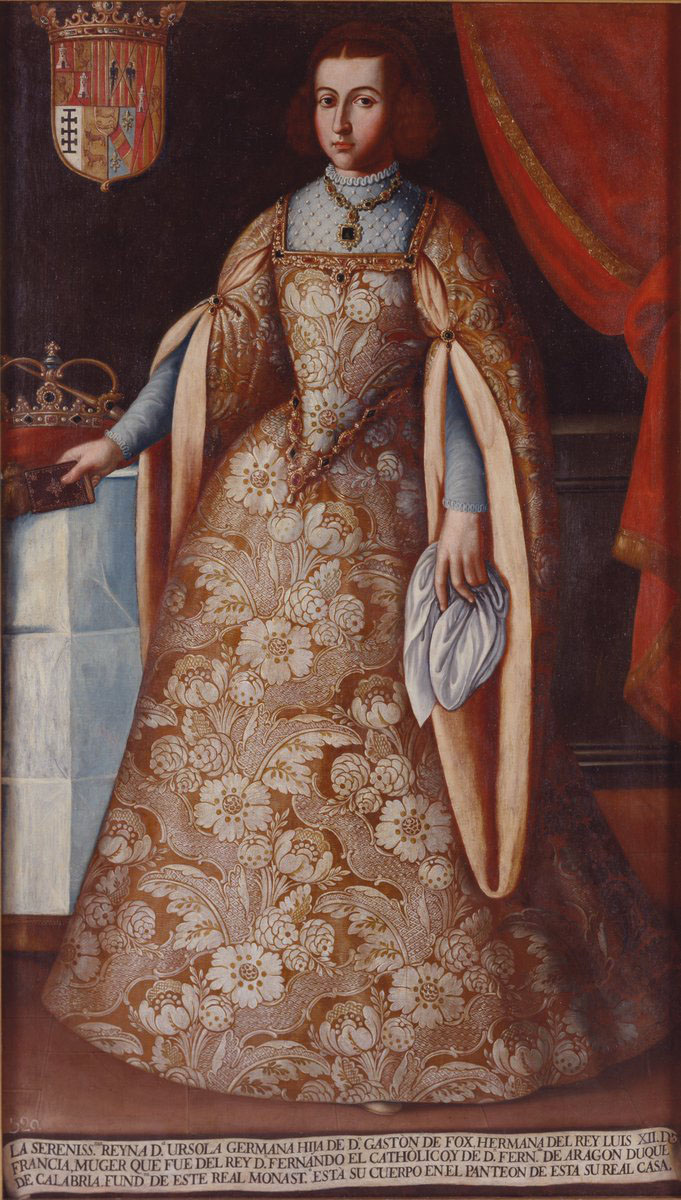
Ferdinand’s second wife Germaine of Foix, Queen Consort of Aragon; Credit – Wikipedia
On October 19, 1506, 18-year-old Germaine married 54-year-old Ferdinand by proxy in Blois, Kingdom of France. Six months later, Germaine traveled to Dueñas in the Kingdom of Castile and León, where she met her husband Ferdinand for the first time, amid great celebrations. The marriage was accepted in Ferdinand’s Kingdom of Aragon but it was poorly received by the people of the Kingdom of Castile and León who saw Ferdinand’s marriage to Germaine as a betrayal of their late queen, his first wife Isabella I, Queen of Castile and León. On May 3, 1509, Germaine gave birth to a son, Infante Juan of Aragon, Prince of Girona, who died shortly after his birth. Had he survived, the crown of Aragon would have been separated from the crown of Castile and León. There were no further children from the marriage.
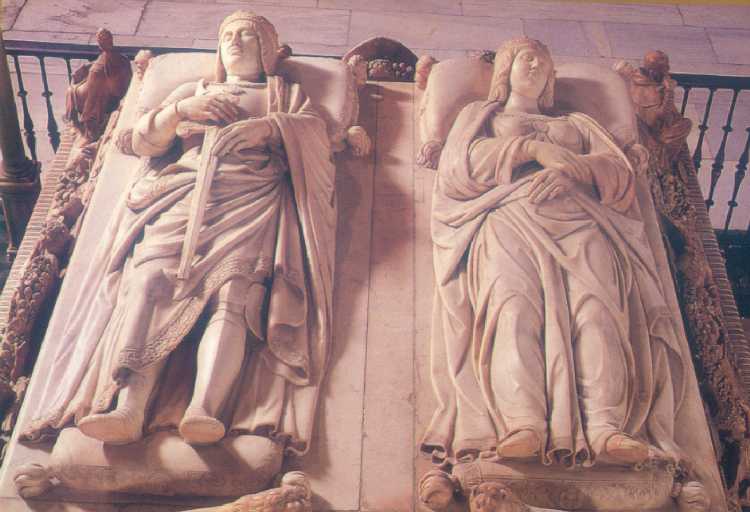
Tomb of Ferdinand and Isabella at the Royal Chapel of Granada; Credit – By Javi Guerra Hernando – Own work, CC BY-SA 4.0, https://commons.wikimedia.org/w/index.php?curid=35974697
On January 23, 1516, Ferdinand II, King of Aragon, died at the age of 63 and was buried next to his first wife Isabella at the Royal Chapel of Granada as Isabella requested. In his will, Ferdinand named his daughter Juana and her eldest son Carlos (also known as Charles in history) as his co-heirs.

Juana’s son Carlos in 1519; Credit – Wikipedia
However, Juana would never really reign as she would not be released from her confinement until her death on April 12, 1555, aged 75. It would be 16-year-old Carlos who would reign. Ferdinand even stated in his will that Carlos should be considered of legal age, despite being a minor, with the express purpose of Carlos reigning immediately. When Juana died in 1555, it resulted in the personal union of Spain and the Holy Roman Empire, as her son Charles V, Holy Roman Emperor, among many other titles, also became King of Castile and León, and Aragon, effectively creating the Kingdom of Spain. Carlos I was not only the first King of a united Spain and Charles V, Holy Roman Emperor, he was also Charles I, Archduke of Austria, and Charles II, Lord of the Netherlands, among many other titles.
This article is the intellectual property of Unofficial Royalty and is NOT TO BE COPIED, EDITED, OR POSTED IN ANY FORM ON ANOTHER WEBSITE under any circumstances. It is permissible to use a link that directs to Unofficial Royalty.
Works Cited
- En.wikipedia.org. 2022. Ferdinand II of Aragon – Wikipedia. [online] Available at: <https://en.wikipedia.org/wiki/Ferdinand_II_of_Aragon> [Accessed 8 July 2022].
- En.wikipedia.org. 2022. John II of Aragon – Wikipedia. [online] Available at: <https://en.wikipedia.org/wiki/John_II_of_Aragon> [Accessed 9 July 2022].
- Es.wikipedia.org. 2022. Fernando II de Aragón – Wikipedia, la enciclopedia libre. [online] Available at: <https://es.wikipedia.org/wiki/Fernando_II_de_Arag%C3%B3n> [Accessed 8 July 2022].
- Es.wikipedia.org. 2022. Juan II de Aragón – Wikipedia, la enciclopedia libre. [online] Available at: <https://es.wikipedia.org/wiki/Juan_II_de_Arag%C3%B3n> [Accessed 9 July 2022].
- Flantzer, Susan, 2022. Isabella I, Queen of Castile and León, Queen of Aragon. [online] Unofficial Royalty. Available at: <https://www.unofficialroyalty.com/isabella-i-queen-of-castile-and-leon-queen-of-aragon/> [Accessed 9 July 2022].

















